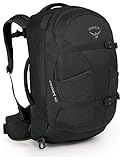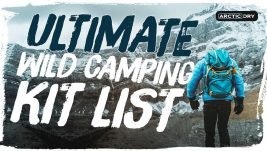What’s the Best Sized Rucksack for Wild Camping?

Contents
Ensuring you have the best sized rucksack is one of the best ways to prepare for a wild camping trip. But how much volume is ideal for your expedition backpack? 50L, 60L, 70L, 200L?!
This is something many beginners to wild camping struggle to understand, the right hiking backpack can make or break your overnighter.
Given that there is nothing like a one-size-fits-all rucksack, a range of factors have to be considered to select a bag that will sustain you sufficiently when you head out to the open spaces.
In this article, we provide you with all information you need when deciding what size rucksack for wild camping best suits the adventure.
What is the Right Size Rucksack for Wild Camping?

The is no right answer to this question. Typically, the ideal size for a wild camping trip will depend on the duration you intend to spend in the outdoors.
If you’re only going for a day’s adventure, then you’ll need fewer supplies and gear, hence a smaller bag compared to when you set out on a week-long expedition. So, depending on the period you’ll be camping out and the type of adventure, the following is the recommended size for a rucksack:
What Size Should You Carry for a Single-day Wild Camping Trip?

A single-day wild camping adventure shouldn’t warrant carrying a hefty backpack. Ideally, a 15-35L daypack will be more than enough for all the gear you need.
Nevertheless, you might want to pack bulkier in the winter season for extra weather-proofing gear, so a larger 25-40L backpack like the Osprey Farpoint will be more apt for you. Remember that for a day’s outing, chances are you’ll want to access the majority of your packed items more frequently.
Because of this, a bag with multiple pockets on the side and front will be more practical. Any items like maps, water bottles, phones, etc. that require constant and easy access will be within easy reach.
Hydration compatibility is another feature you might want to consider, especially in a hot camping environment. Some packs come with a built-in bladder with an easy-to-access mouthpiece.
If your wild camping trip involves multiple day trips inside a longer stay in the outdoors, it is advisable to carry a smaller lightweight, and packable daypack that you can fit inside the main rucksack.
What Size Is Ideal for a Multi-day Wild Camping Trip?

If you’re planning a multi-day trip that involves a little bit of hiking, it is recommended you go for a larger rucksack. Anything in the range of 55-80L capacity will be fitting. A good example is the Osprey Europe.
Remember that you’ll need to carry extra gear like sleeping bags and sleeping mats, which may not be necessary on a one-day adventure. These also take up a lot of space, which means your back should be much bulkier.
A removable divider may be necessary in the main compartment to separate wet clothes from dry ones in case it rains in the wild. Furthermore, attachment points will be a functional way to accommodate walking poles and other handheld tools used during trekking.
An important tip to keep in mind is when you purchase a big backpack, make sure it’s not wider than you. This way, the sides of the bag won’t snag on branches and rocks as you navigate narrow paths and thickets. Also, side pockets that pack away when not in use will be a welcome feature.
Best Rucksacks for Wild Camping
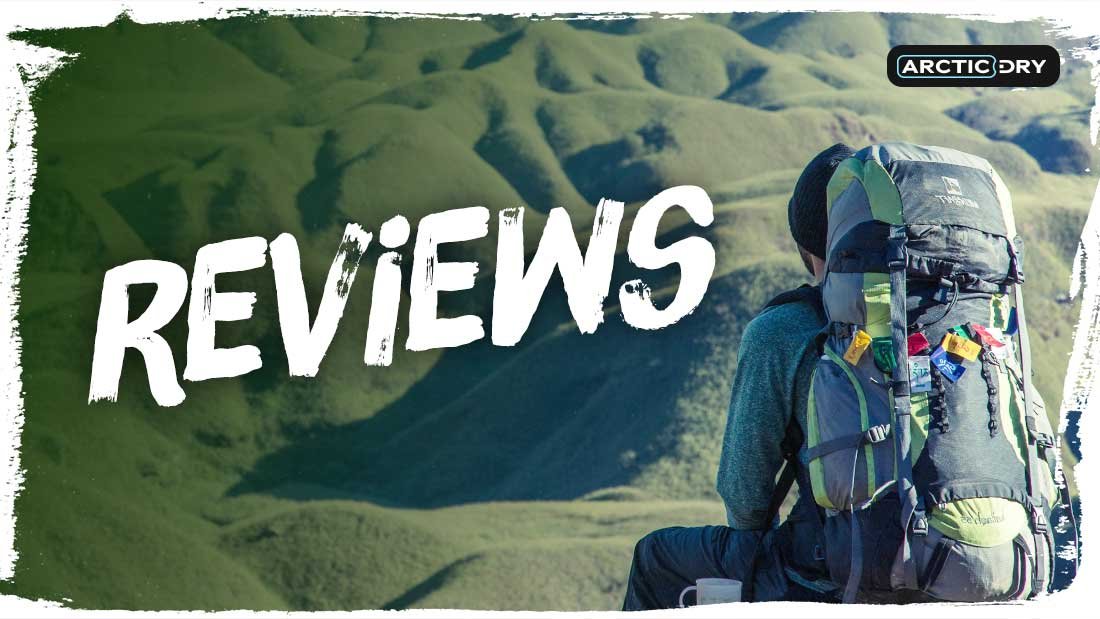
Osprey Men’s Atmos 65 AG
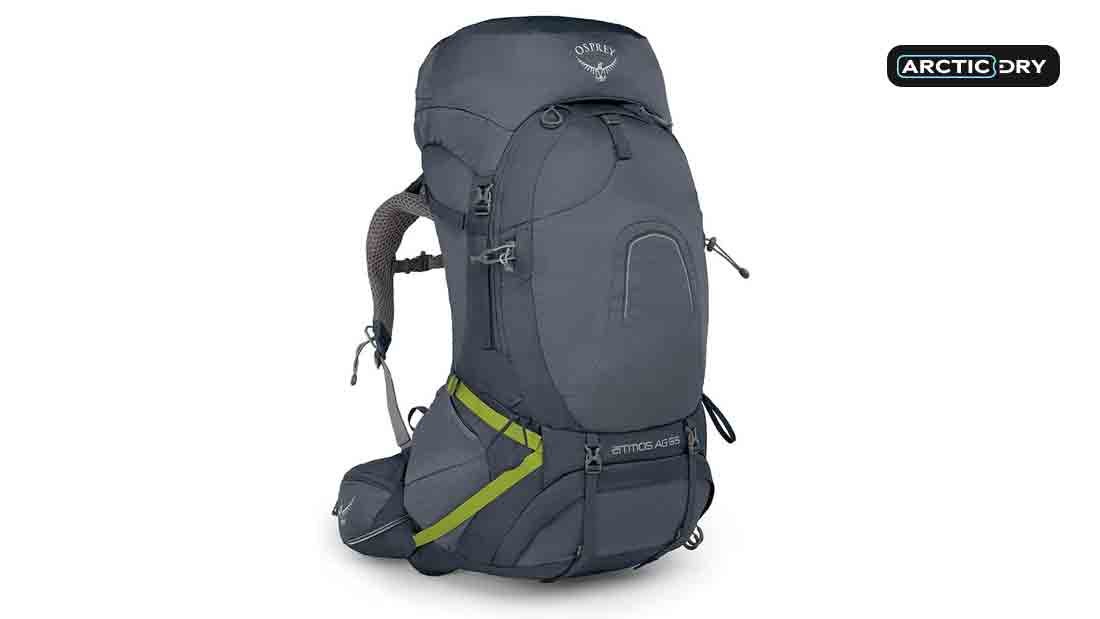
The Osprey Atmos 65 Atmos AG is a nice camping backpack suitable for a trip lasting 3-5 days; alongside the Osprey Aura Backpack it’s one of their best packs.
It is equipped with a range of useful features to fit all the requirements of a wild camping backpack, including durable construction material, ample and well-designed storage, as well as a water-resistance performance in wet conditions.
You won’t crumble under the weight of the fully packed Atmos AG 65 thanks to the anti-gravity suspension system used.
On the back panel, you get plenty of padding to guarantee your comfort on the trail. This is also breathable with the vents stretching to the shoulder straps.
The entire back is covered by a large suspended panel while the shoulder straps are designed with open webbing to maximise ventilation when it gets hot and humid. This is what makes the AG one of the most comfortable camping backpacks around.
With its 65L capacity, you should be able to fit all your camping necessities in the bag. Furthermore, plenty of pockets allow for easy organisation of items, and this is enhanced by lash points and gear loops positioned at strategic areas.
There are 2 zippered pockets at the top, 2 mesh bottle holders, a hydration sleeve, and a large pocket at the front of the bag. You can store up to 3 litres of water in the internal reservoir, which should cover you for the entirety of the hiking distance.
Overall, the Osprey Atmos 65 AG distributes weight optimally across your back, shoulders, and hips while the anti-gravity suspension system makes you feel like you’re carrying less weight.
Furthermore, plenty of ventilation and padding on the back panel results in a comfortable bag to carry on those long-distance adventures. On the downside, the Atmos 65 is not the lightest or cheapest rucksack out there. But you can rest assured that you’re getting value for your money.
Osprey Farpoint 40

The Farpoint is another exciting option from Osprey that will suit any weekend camping trip in the wild. Its 40L capacity ensures you don’t overpack for the adventure, leaving you with the freedom to move around with no restrictions.
The simple style of the bag also delivers the ease of packing found on a travel suitcase. You will appreciate the limited straps and attachment points, which eliminates all the clutter you find on other models.
You can’t even see the zipper on the main compartment, and this makes for a seamless appearance.
The bag is small enough to take inside the passenger area in a plane, meaning your weekend wild camp getaways won’t be limited to your locality. There is enough room inside the bag to carry the little stuff you’ll need for a two-day trip. It opens up like a suitcase to give you an easy time while packing and unpacking.
Internal straps allow you to squeeze your clothes and maximize the space inside. You also get large pockets inside that you can use to organize your luggage optimally for the journey.
At only 3lbs, the Farpoint 40 is an ultralight bag that you’ll barely notice when it’s on your back. Your comfort is enhanced by a LightWire frame suspension that conveniently transfers the weight of the load from the harness to the hip belt. With the removable shoulder strap, you can use this bag both as a backpack and duffle bag depending on what you prefer.
Osprey Daylite Day pack
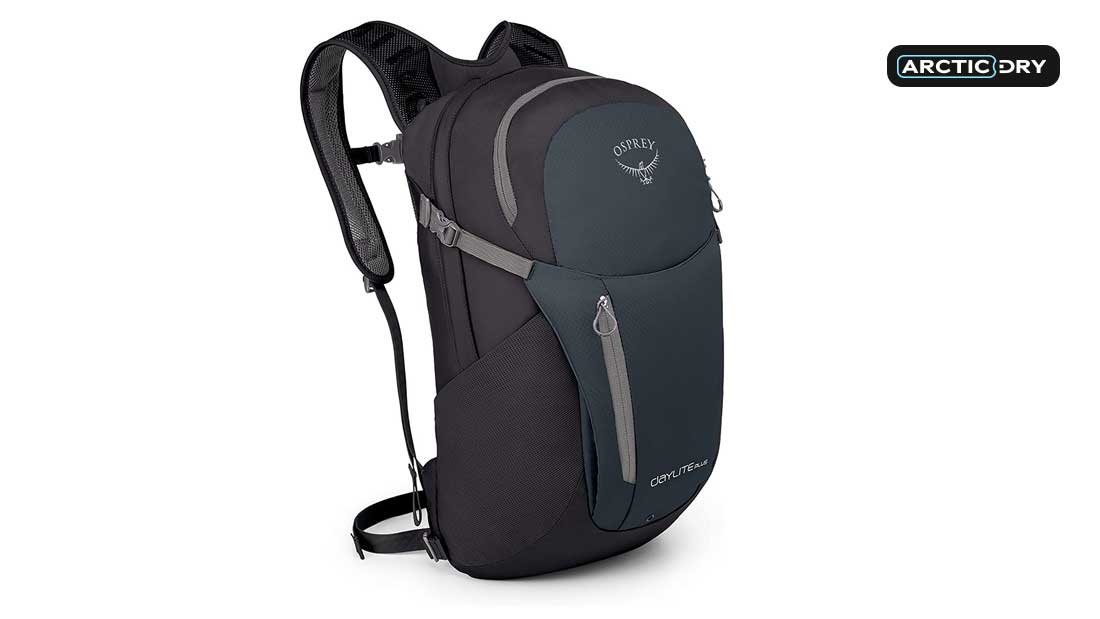
If you don’t want to spend more than a day away from home, the Osprey Daylite is what you carry for a single-day wild camping escapade. With dimensions of 9 x 9 x 18′, this is one of the smallest and lightest daypacks around, which gives you the chance to explore the outdoors to the maximum.
At the back of the bag is a nice mesh fabric to allow free airflow and keep you cool during strenuous activity. The Osprey Daylite features two main compartments that you can access from the top.
The larger front compartment will accommodate most of your luggage while the smaller elastic back slot can hold gadgets like a laptop, tablet, or even your hydration pack. Smaller accessories can be kept inside the 1/3 length pocket at the front of the bag.
Additionally, mesh pocket organisers are included, as well as a key holder, where you can safely stow away the smallest items. Another great thing about this bag is that it is attachable to larger bags from Osprey such as the Aeriel series, Ace 75, Sojourn series, Shuttle series, etc.
This makes the combination ideal for travel wild backpacking trips where you can leave the large bag in the hotel and use the smaller Daylite pack for your day’s expedition.
Overall, this multifunctional backpack offers a fitting performance for those who like to explore leisurely. Despite its tiny look, it offers more space than you can need inside for a day’s outdoor adventure. An adjustable chest strap makes it practical for mountain bilking escapades in the wild, meaning you can use the Osprey Daylite for any short adventure that comes to mind.
Osprey Raptor 14 Hydration Backpack
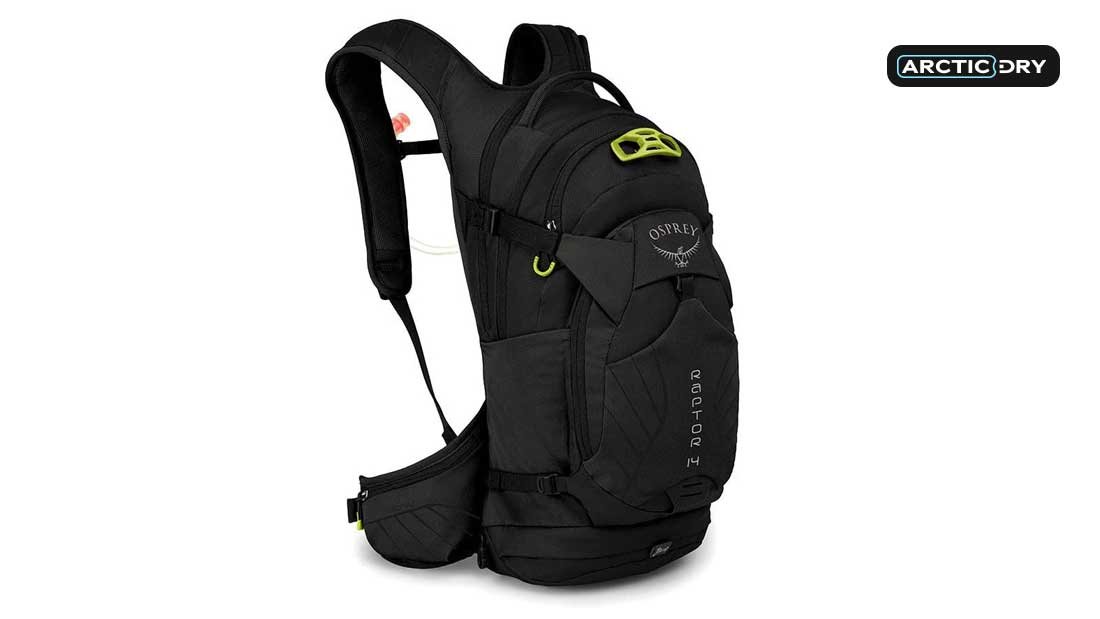
If you want to include your mountain bike in the wild camping trip, the Osprey Raptor 14 Hydration backpack was created for that very purpose. This 14L pack features a 3L hydraulics reservoir that reduces liquid movement to make for a stable ride at top speed.
A zipper on the hydration sleeve allows for easy refilling while the hose loops through the shoulder strap to the sternum strap, which holds the drinking tube.
The bag fits almost perfectly on your back during riding. It snugly hugs your body to remain stable even on bumpy rides. Meanwhile, the straps sit it low and nice to avoid intruding into the helmet while cycling. The shoulder, chest, and hit straps are easily adjustable and help to secure the bag in the most comfortable position on your back. Also, you will love the special padding on the back panel meant to cushion your back, as well as the ventilation to keep you cool during strenuous riding.
A removable roll-out tool pouch is integrated into the bag’s design, ensuring you are equipped with all the tools for any unforeseen bike damages. This features a zippered lower pocket where you can neatly stow away your bike essentials.
As if that’s not enough, the manufacturer included a zippered hip-belt pocket to store your phone, sunglasses, keys, a wallet, and similar valuables in a secure place.
So, if you want to make your camping trip more interesting, this pack is practical enough to let you camp on two wheels. It has all the features to make for a stress-free experience in the wild with all the space to carry the necessary hiking gear.
The only grievance is that the hydration pack doesn’t detach from the bladder, posing a challenge during cleaning. Also, the price of the Osprey Raptor is slightly on the higher side.
Osprey Rook 65

Most quality camping backpacks will cost at least £150, but the Osprey Rook 65 allows you to save some change with its £100 price tag; if you’re open to compromising a few features.
With its 65L capacity, this backpack is a nice option for multi-day camping retreats that can stretch into a week. It is constructed using 100D and 600D fabric, resulting in an extremely tough design to cope with tough wild camping conditions.
The basic suspended back panel allows for convenient ventilation to keep your back cool when the hiking trail gets hot and humid. With its 3lbs 8.3Oz weight, the bag is fairly lightweight for the capacity and size it comes with. Nonetheless, you might want to take it easy on the packing if you don’t want to be burdened on the trail.
To try and shield you from the dense weight of the bag, Osprey used basic padding on the back and shoulder straps, as well as a suspension system. However, this does little to ease the strain when the bag is fully packed.
In this case, it comes in the form of basic comfort features like the padding and suspension system. Also, the pockets are generally limited, leaving little chance to organise your gear as you’d prefer. Despite the downsides, this bag is durably made to survive the outdoors and will be a great bargain for budget shoppers looking to go for a long wild camping adventure.
Conclusion
So, if you ever wondered what size rucksack you should take along to your next stealthy wild camp, this article should give all the information you need to make an informed decision.
Overall, the important thing is to ensure you carry as much gear as is necessary without overburdening yourself with the weight. Depending on what you prefer, any of the mentioned wild camping rucksacks will be a good option.
FAQ
What Size Rucksack Do I Need for Wild Camping?
Too small a rucksack and you won’t be in a position to bring all the necessary gear. Ideally, 45-50L should be the minimum capacity for a bag meant for a wild camping adventure. However, it will all come down to the bulkiness of the gear you’re carrying and the number of nights you want to spend outside.
Is a 40L Rucksack Big Enough for Wild Camping?
Usually, a 40L bag is all you need when planning a weekend adventure. It is big enough to accommodate a small tent, sleeping bag, sleeping pad, as well as a few clothes that you’ll need during the stay. Additionally, you can squeeze in some edibles to sustain you during the stay.
How Bi a Rucksack Do I Need?
If you’re going for a multi-day hiking trip, it is recommended you get a 55-80L capacity bag. This will carry essential items like a tent and sleeping bag that normally take up a lot of space. But if you are staying in a hostel, you can go for a smaller backpack since you won’t have to bring along the tent or sleeping bag.
How Do You Survive Wild Camping?
The most important rule in wild camping is to respect the environment around you! This is to say that you should leave everything the way you found it. If you managed to move any small rocks during your stay, make sure you put them back where you found them before you leave. Also, don’t pollute the environment through littering or lighting fires.




